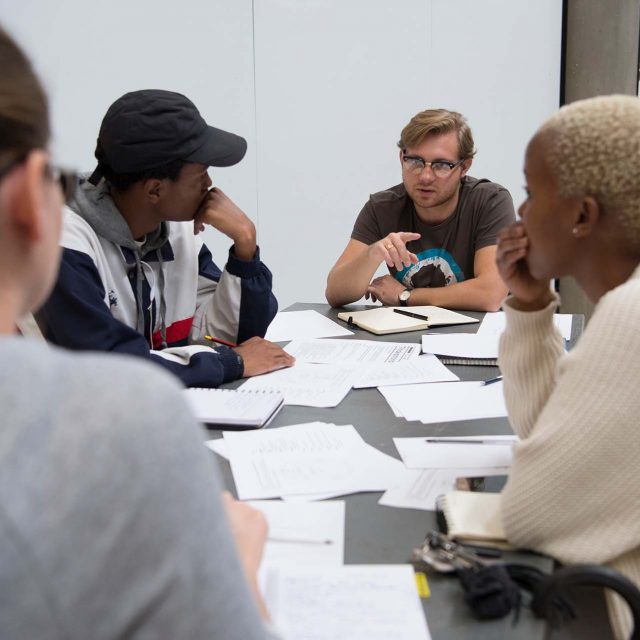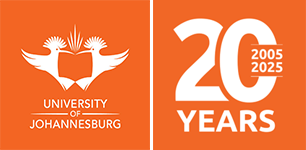Advanced Diploma in Architecture
Home » University Courses »General
Faculty Website: Faculty of Art, Design and Architecture
Department: Department of Architecture
Programme Level: Postgraduate
Programme Name: Advanced Diploma in Architecture
Programme Code: A7AT1Q
Medium of Facilitation: part-time, Full-Time
NQF Level: 7
NQF Credits: 120
SAQA: 115931
Application Start Date: 1 April 2025
Application End Date: 30 November 2025
Campus: Auckland Park Bunting Road
Contacts: 011 559-1125 or 011 559-1098
Email:
Duration of Study: 1 Year Full-Time and 2 Years Part-Time
Purpose
The purpose of the Advanced Diploma in Architecture is to empower students with advanced practical and critical thinking skills through multi-disciplinary projects and discipline specific applications, to aid thinking and problem solving through art, design and architecture and to equip graduates with the knowledge, values and attitudes needed that contribute to the architecture profession, to address important pertinent issues through practice.
Curriculum
ADA7XA1 MAD7XA1 AAP7XA1 ARP7XB2
Admission Requirements
Students in possession of an accredited Diploma in Architecture are eligible to apply for admission to this programme.
Selection Process
Selection is based on the submission of a portfolio and the student’s academic record. An average mark of 60% for all third-year modules is recommended.
PORTFOLIO REQUIREMENTS
A portfolio is a collection of the applicant&%2339;s work, held in protective covering, such as cardboard or rigid plastic sheets. Covers must not be larger than 594mm X 420mm (A2).
The applicant&%2339;s reference number (on your invitation letter), telephone number and the wording “DEPARTMENT OF ARCHITECTURE” must appear on the cover in neat block letters.
The portfolio cover is part of the portfolio and should be designed as a reflection of the applicant and their work.
The portfolio must contain the following:
a) A single A4 sheet (preferably typed) providing:
A summary of the applicant&%2339;s most recent school results and other studies
A brief outline of the applicant&%2339;s work experience and the results of any aptitude testing
A certified declaration that the portfolio is the applicant&%2339;s own work
b) A certified copy of the applicant&%2339;s most recent school results and other studies
c) A one-page essay (preferably typed) explaining why the applicant would like to study architecture
d) A letter from a firm of architects confirming that the applicant has spent a full day in their office and has discussed a career in architecture with one of the senior members of the firm.
Project 1: Drawing
Make a pencil drawing of the entrance to a favourite public building. Use A2 paper (594mm x 420mm). Do this drawing as accurately and as neatly as possible.
This drawing must be done free-hand. A ruler, compass or any other technical drawing instrument may not be used, nor may the drawing be traced from a photograph. You may add colour and or any form of rendering. It is preferable that you draw a building that you have visited before.
In your own handwriting and words, describe the entrance that you have drawn and why this particular entrance appeals to you. This essay should clearly describe the building; its entrance in totality, including but not limited to, the spaces on either side of the entrance door. Where possible, indicate which architect and/or engineer designed the building. This essay should not exceed 2 pages.
Project 2: Mapping exercise
Without text, visually communicate a journey from your home to a favourite local destination. Any medium is acceptable.
Use one sheet of A2 paper.
All drawings must be done free-hand only. A map on its own will not suffice.
Project 3: Creative ability
Include any five other pieces of work as evidence of your creative ability. This could include photographs, essays, poetry, paintings, dance, sculpture, pottery, handicraft, etc. In the case of items such as pottery, sculpture or activities such as dance, include a clear photograph – do not include the original item.
You should preferably include a diverse array, not just photographs or paintings, etc.
Project 4: Three-dimensional thinking
Design and make cardboard packaging that can securely hold a set of three table tennis (“ping-pong”) balls. Your design must be such that it can be made from a single piece of cardboard that can be cut to shape, folded and glued together.
The packaging must be “flat packed” (cut out but not folded and glued together) and included in your portfolio in its flat (unfolded form). On a separate A2 sheet of paper, provide graphic instructions on how to assemble the packaging.
PLEASE NOTE
The size of portfolio may NOT exceed A2 (594 x 420mm).
The drawings may NOT be rolled up or put into cylindrical containers.
Each item of your work must be clearly marked with your name.
While we take every care not to damage items, we cannot be held responsible in any way for the loss or damage to the whole or part of your work.
We look for the following in the work:
Potential and resourcefulness: Note that candidates with little experience in art or design are admitted where their work provides evidence of good observation, three-dimensional awareness and careful consideration of the presentation of the portfolio, with good, hand-drawn lettering, careful paper selection and careful organisation of the pages.
Motivation: This can be seen in the way in which you present your work as a whole, the degree of effort and time invested in your portfolio as well as your written motivation.
Initiative: What often separates successful applicants from others is the ability to explore or record something for themselves, working because they are interested – not because they have to. This means that sketch explorations are as useful as finished works. Although supplementary work from school art or other institutions or courses is often received, evidence of this independent initiative does not necessarily lie there.
Creative ability: This is an important factor. However, note that expertise in technical drawing, painting, water colours, etc. is not all that is looked at. A sense of design or composition, an ability to observe, communicate clearly, represent accurately and a sense of scale that allows for an imaginative approach to subject matter and attention to detail are all looked for in the work.
Academic potential: Strong portfolios often show work that is motivated by original ideas, thoroughness, initiative, faultless grammar and spelling, vocabulary, research, etc.
Details of portfolio evaluation are available on www.uj.ac.za/architecture
Portfolio Submission
Applicants must submit a prescribed portfolio.
Submission of a portfolio must only take place once you have officially applied to the university and have been invited by the faculty to participate in the selection process. You will be informed by means of a selection letter from the faculty regarding submission dates and portfolio requirements.
Portfolios can be submitted to:
University of Johannesburg
Faculty of Art, Design and Architecture (FADA)
Bunting Road Campus
Auckland Park, 2006
*Portfolios can be posted or dropped off at the above address.
Applicants are informed of the outcome in an official letter. Portfolios must be collected four weeks after submission, unclaimed portfolios will be disposed of by the department.
More Information
https://www.uj.ac.za/admission-aid/postgraduate/
UJ Faculties
| All Faculties
College of Business and Economics (CBE)
Created from the former Faculties of Management, and Economic and Financial Sciences



Faculty of Engineering & the Built Environment
First in South Africa offering a full range of professional engineering qualifications










